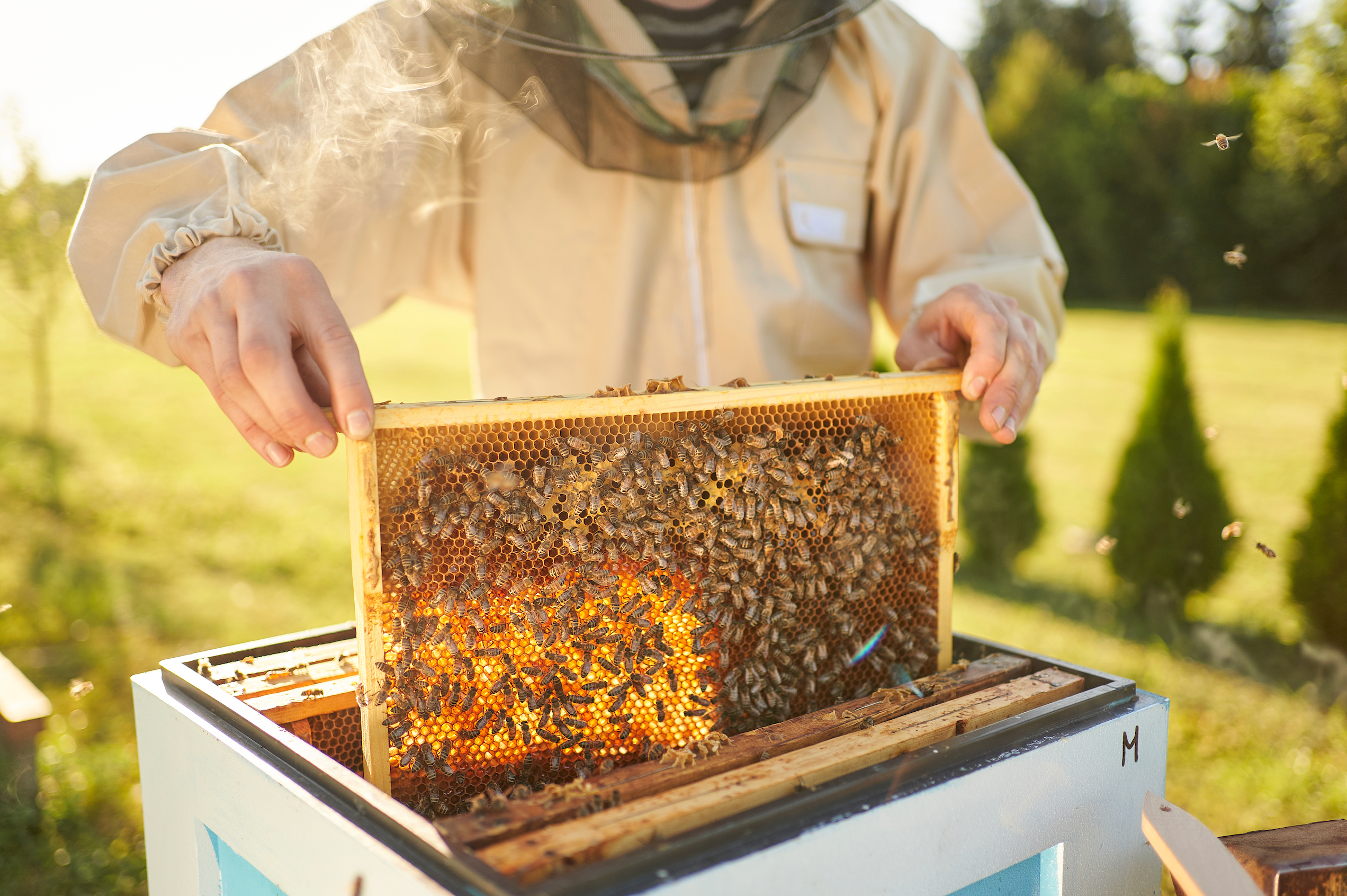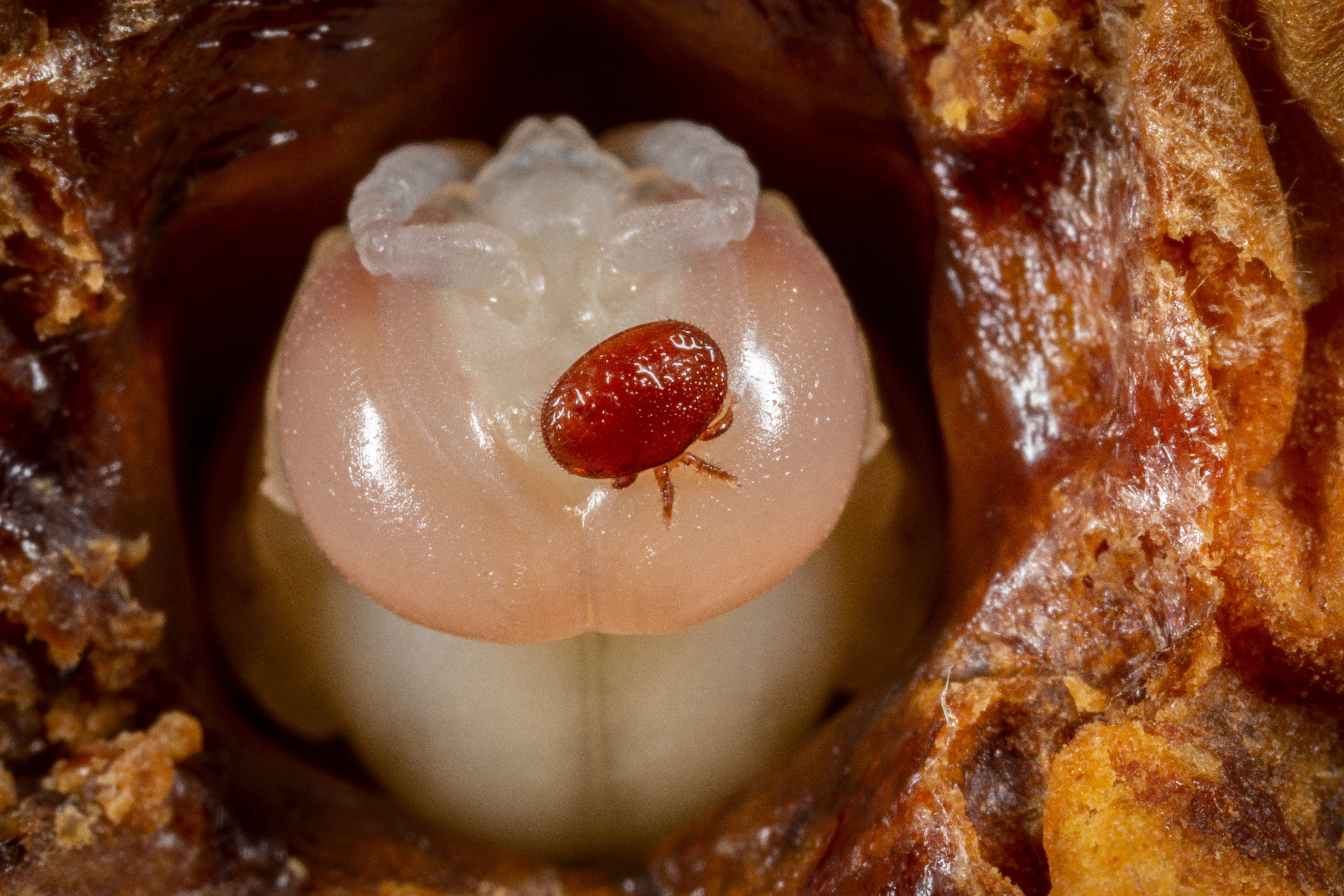Maximising Honey Production and Managing Costs of Beekeeping with Varroa Mite
- Varroa mites change how beekeepers make money, moving from many hives with little care to fewer hives with more care.
- The cost of Varroa means you need to get the most value from each hive.
- Look at how much honey each hive makes to find out what's working and what's not.
- New ways of beekeeping, like using two queens, can help you get more honey.
- Try new ideas on a small number of hives first to limit risk.
Introduction: The Varroa Challenge and Your Apiary's Future
Beekeepers around the world are dealing with the money side of Varroa mites. These tiny pests challenge the old ways we used to manage our hives. So, how can you still make the most honey, even with Varroa mites causing problems?
This blog post, along with a video featuring Dr. Mark Goodwin (created by Ecrotek to help beekeepers), looks at the money part of beekeeping. It shows why we need to change how we work, focusing on taking good care of fewer hives. This offers helpful ideas for beekeepers everywhere, including those here in Australia.
The Traditional Hive Model: A Look Back
In the past, beekeeping often meant keeping as many hives as possible and doing very little work on each one. This way, you could make a good profit by having many hives. But now, with Varroa mites, this old way of doing things doesn't work as well.
Varroa Mite's Global Problem: A New Cost
Varroa mites are a threat to beekeeping all over the world. They add a constant cost for each hive you have. This means the money you spend on Varroa doesn't lead to more honey or income. We need a new way of thinking about beekeeping and money.
Switching to Better Management: Quality Over Quantity
To deal with the money problems Varroa mites cause, beekeepers should think about having fewer hives but giving them the best care. This means focusing on managing each hive well to lessen Varroa's harm and get the most value from every colony.
Checking Honey Production: Learn from Your Best Hives
A good way to put this "maximum management" idea into practice is to look at how much honey each of your hives makes. By comparing your hives to your best-producing ones, you can see what good management can do. Finding and fixing problems in hives that aren't doing well can lead to big improvements.
Using New Beekeeping Ways to Make More Honey
Beekeepers everywhere, including those in Australia, should get ready for Varroa by looking closely at how they produce honey. Even small increases in management effort can bring good results. Ways like "double queening" (using two queens in one hive), which has worked well in many places, offer useful ideas for making more honey.
Making Global Management Techniques Your Own
Beekeepers worldwide should change their management ways to fit what their own colonies need. When you understand that different ways of managing lead to different hive performance, you can make changes that help your hives be healthier and more productive overall.
Test and Learn with a Small Number of Hives
While trying new ways is important, beekeepers everywhere should be careful. Trying out changes on a small number of hives that you can easily handle helps limit risk. It also lets you improve your techniques before using them across all your hives.
Conclusion: A Smarter Path for Beekeeping Profit
Varroa mites are changing the way beekeeping works financially around the world. The lessons learned from how Varroa has affected hive management in different places, including Australia, show that we need to focus on giving our hives the best care, even if it means having fewer of them.
Adapting to these changes is key to making sure beekeeping stays successful and profitable for a long time.
Summary of Key Takeaways
- The presence of Varroa mites means moving from a hands-off approach with many hives to an active management approach with fewer, higher-producing hives.
- Your beekeeping business's long-term health now depends on getting the most value from each colony through careful management.
- Compare honey yields between your hives, use new techniques (like double queening), and make them fit your local needs.
- Always try new ideas on a small number of hives first to limit risk and improve your methods.
- Changing how you manage your hives to fit these new financial rules is vital for beekeeping success in the future.
Ready to Protect Your Hives?

Ecrotek Australia gives you the tools and knowledge you need for effective Varroa mite management. From detection kits to treatment options, we're here to help you keep your colonies healthy and productive.
Shop Varroa Mite ProductsOr contact our team today for personalised advice on Varroa mite management solutions for your beekeeping operation.


